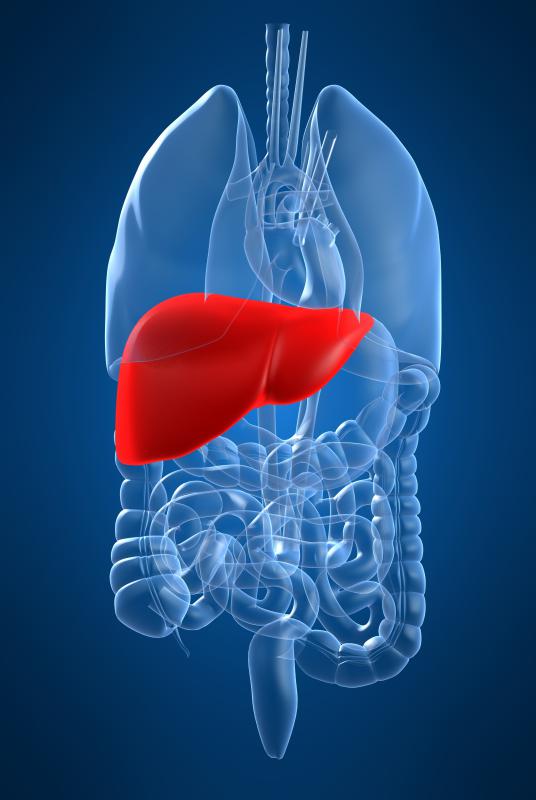At WiseGEEK, we're committed to delivering accurate, trustworthy information. Our expert-authored content is rigorously fact-checked and sourced from credible authorities. Discover how we uphold the highest standards in providing you with reliable knowledge.
What is the Anatomy of the Liver?
The liver — located in the right abdominal area of humans — is one of the most important organs in the body. Its vital functions include waste removal, metabolism, and protein production. The anatomy of the liver contributes to the organ's diverse duties. These anatomical components include lobes, ducts, and blood vessels. Blood and bile move through the liver system.
The position of the liver puts it in proximity to several other key organs. As a visceral organ of the abdominal cavity, it rests alongside the stomach and in front of the gallbladder: two organs crucial in digestion. Other nearby organs include the pancreas, the intestines, and the heart. Since the liver is so close to other organs, a substance called peritoneal ligament covers the liver and protects it from damage. The liver also attaches to the primary chest muscle, the diaphragm.

Major blood vessels connect the liver with other organs, thus playing an important role in the anatomy of the liver. A hepatic artery receives blood from the heart’s primary artery, the aorta. Meanwhile, the portal vein serves as a gateway between the liver and the digestive system. Hepatic veins, in turn, take blood from the liver to other parts of the body. Besides the large vessels, smaller blood vessel systems are contained within 20 independent segments of the liver.
When blood enters the liver, it moves into clusters of liver cells called lobules. These cells are unique because they can go through the cell creation cycle more than once. This makes the liver the only human organ that can regenerate.

The incoming blood contains nutrients from digestive processes, and this blood is processed by the liver cells, or hepatocytes. Blood processing facilitates metabolic, or energy-making, liver functions, such as the breakdown of carbohydrates and fats. Other processes performed in the lobules include red blood cell and bile production, the activation of certain proteins, and the storage of various vitamins. Each lobule also has an attached vein that transports blood to the main hepatic vein.

Thousands of lobules combine to form liver lobes, making them perhaps the most prominent components in the anatomy of the liver. Overall, the liver consists of two main lobes: the right and left lobes. Two less prominent lobes lie behind these rounded projections: the caudate and quadrate lobes. Muscular fibers known as ligaments separate the various lobes and structures of the liver.

The lobes also contain ducts. These hollow tubes transport bile, a waste-eliminating substance made by the liver. The smaller intrahepatic ducts inside the liver connect to a larger right or left hepatic duct. These separate branches then merge to create the common hepatic duct. This duct continues outside the liver, where it joins with a duct in the bile-storing gallbladder known as the cystic duct. The duct system demonstrates how important it is that all the ducts, arteries, and lobes interconnect for efficient transportation of essential fluids.
AS FEATURED ON:
AS FEATURED ON:














Discuss this Article
Post your comments